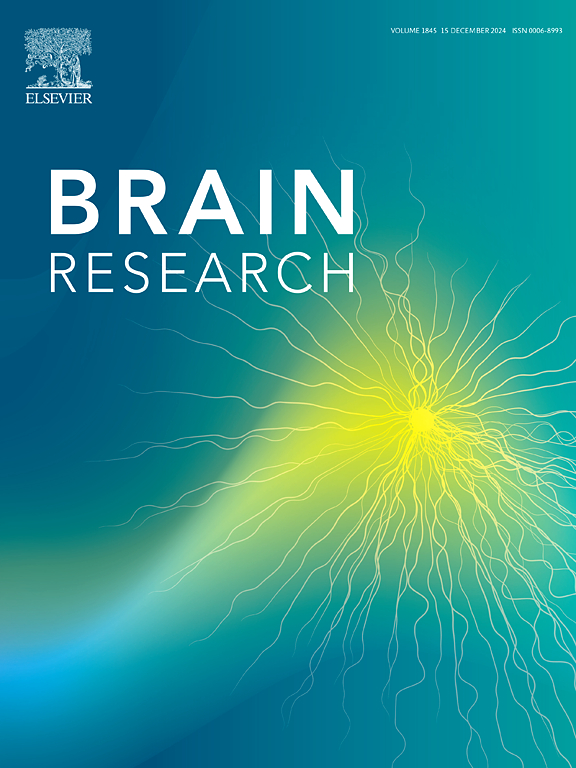NRXN3-NLGN1复合物影响母分离大鼠抑郁的发展
IF 2.7
4区 医学
Q3 NEUROSCIENCES
引用次数: 0
摘要
早期生活压力(ELS)增加了儿童和青少年患重度抑郁症的风险。然而,ELS诱导的重度抑郁症(MDD)的分子和细胞机制尚不清楚。在此,我们建立了一个应激模型,在该模型中,产后母亲分离应激(MS)增加了以后生活中对约束应激(RS)的易感性。在机制上,MS引起大鼠突触可塑性的长期改变,并伴有海马分支和脊柱长度的减少。我们确定了细胞粘附因子神经素3 (NRXN3)及其配体神经素1 (NLGN1)作为这些作用的介质的作用。海马NRXN3和NLGN1下调发生在观察到的突触变化和抑郁相关行为之前。综上所述,NRXN3参与了母亲分离所致抑郁的发生发展,其具体机制涉及NRXN3- nlgn1复合物,该复合物可介导突触可塑性,增加抑郁易感性。本文章由计算机程序翻译,如有差异,请以英文原文为准。
NRXN3-NLGN1 complex influences the development of depression induced by maternal separation in rats
Early-life stress (ELS) increases the risk of major depressive disorder in children and adolescents. However, the molecular and cellular mechanisms of major depressive disorder (MDD) induced by ELS are poorly understood. Here, we establish a stress model in rats in which maternal separation stress (MS) during the postnatal period increases susceptibility to restraint stress (RS) later in life. In terms of mechanism, MS causes long-lasting synaptic plasticity alterations in rats, which is accompanied by reduced branch and spine lengths in the hippocampus. We identified the role of the cell adhesion factor neurexin 3 (NRXN3) and its ligand neuroligin 1 (NLGN1) as mediators of these effects. NRXN3 and NLGN1 downregulation in the hippocampus occurred prior to the observed synaptic changes and depression-related behaviors. In conclusion, NRXN3 is involved in the development of depression induced by maternal separation, and the specific mechanism involves the NRXN3-NLGN1 complex, which can mediate synaptic plasticity and increase susceptibility to depression.
求助全文
通过发布文献求助,成功后即可免费获取论文全文。
去求助
来源期刊

Brain Research
医学-神经科学
CiteScore
5.90
自引率
3.40%
发文量
268
审稿时长
47 days
期刊介绍:
An international multidisciplinary journal devoted to fundamental research in the brain sciences.
Brain Research publishes papers reporting interdisciplinary investigations of nervous system structure and function that are of general interest to the international community of neuroscientists. As is evident from the journals name, its scope is broad, ranging from cellular and molecular studies through systems neuroscience, cognition and disease. Invited reviews are also published; suggestions for and inquiries about potential reviews are welcomed.
With the appearance of the final issue of the 2011 subscription, Vol. 67/1-2 (24 June 2011), Brain Research Reviews has ceased publication as a distinct journal separate from Brain Research. Review articles accepted for Brain Research are now published in that journal.
 求助内容:
求助内容: 应助结果提醒方式:
应助结果提醒方式:


